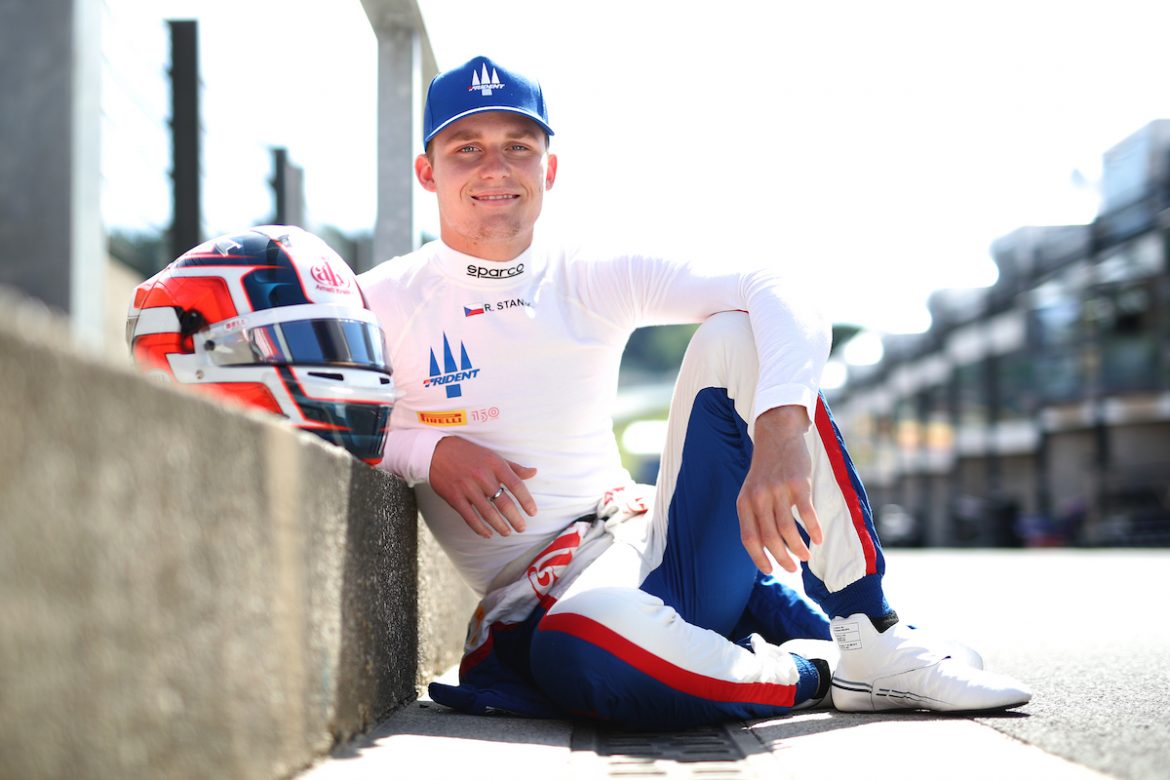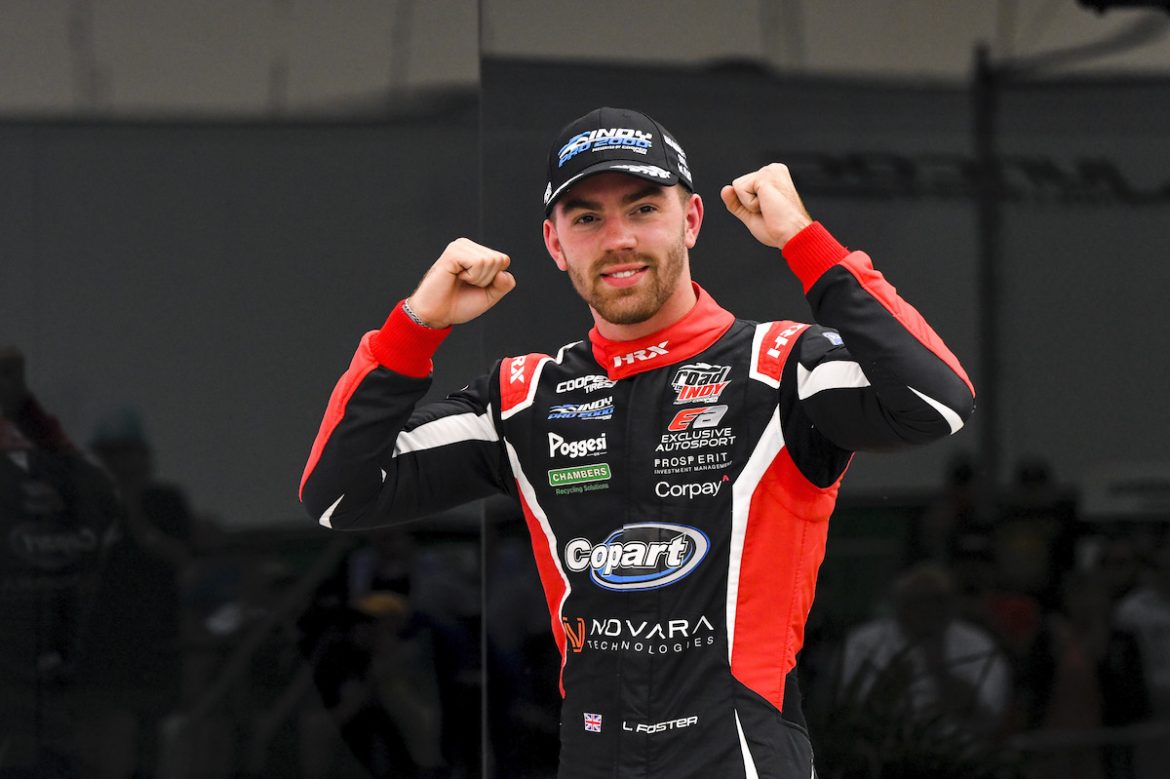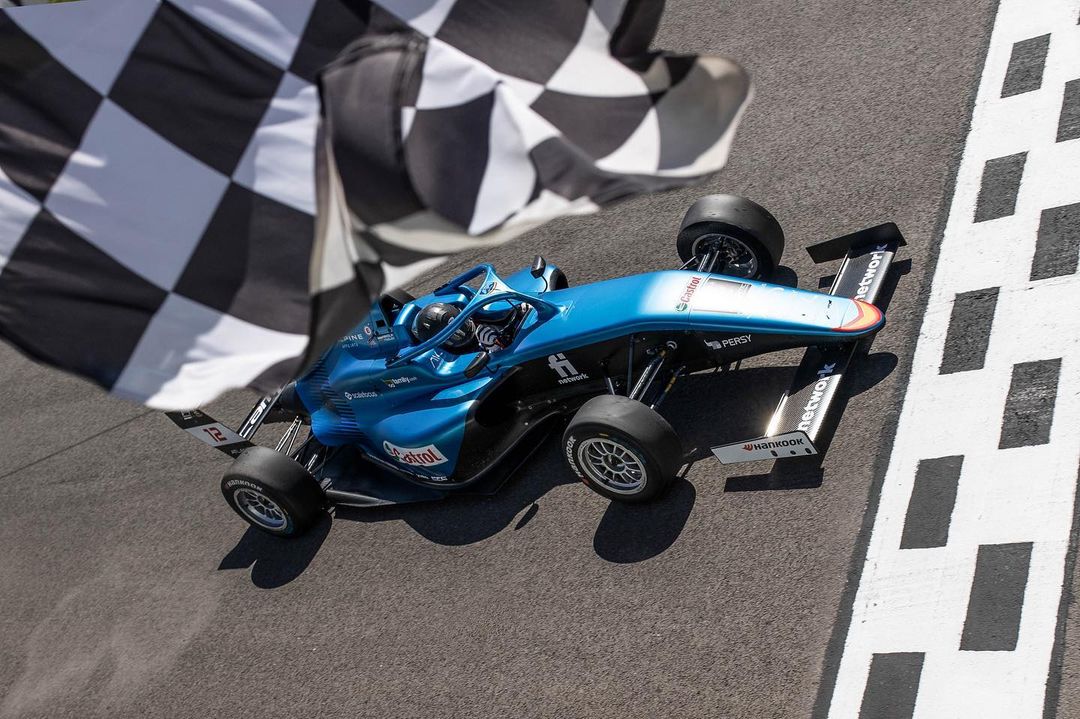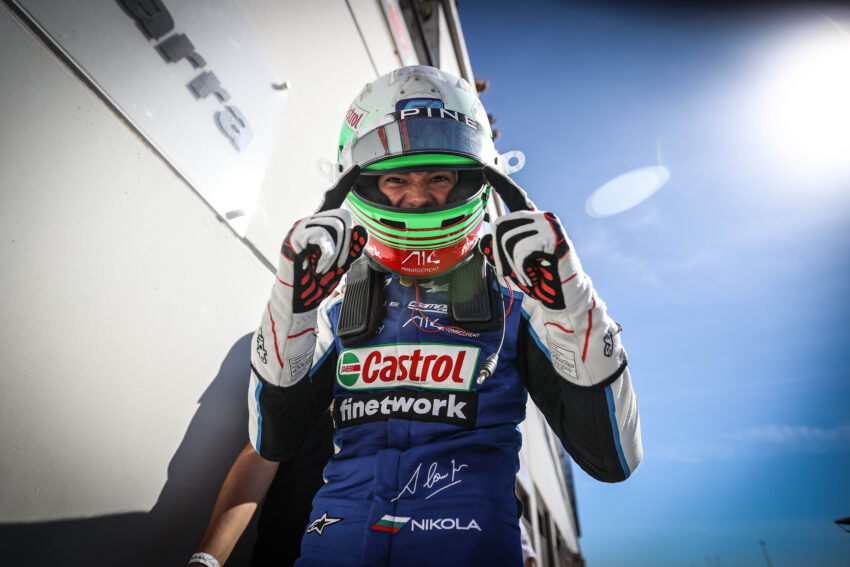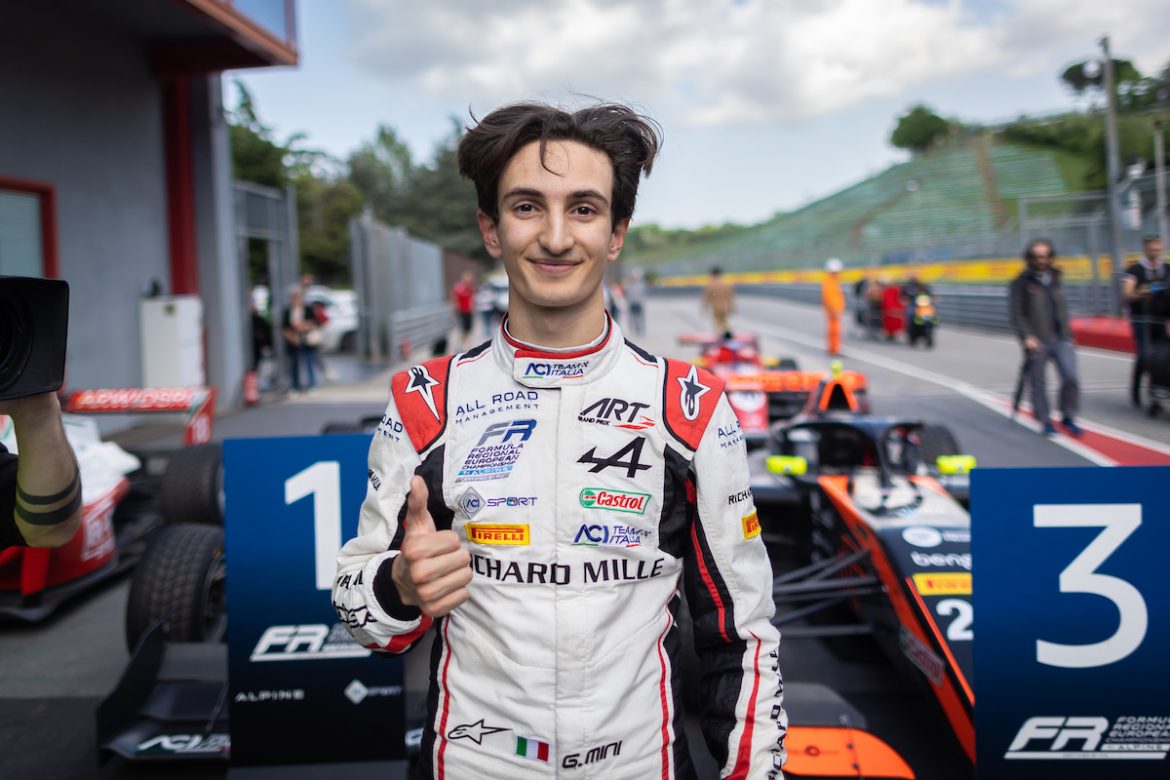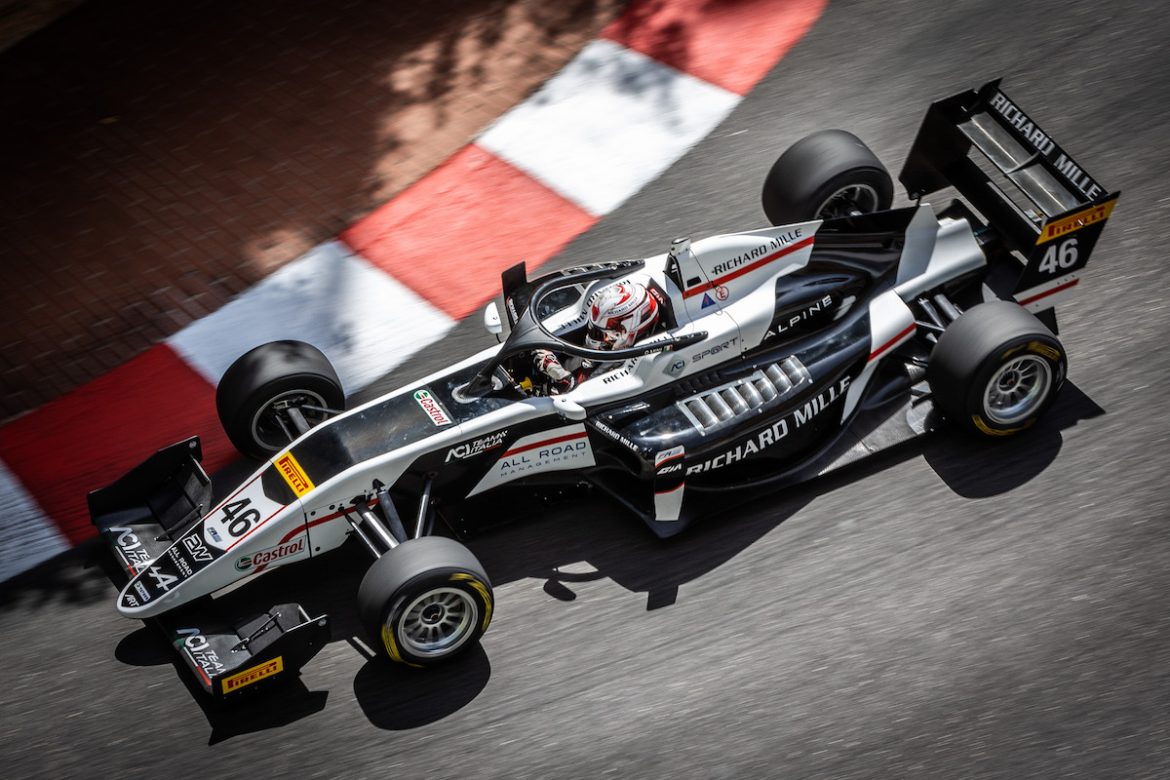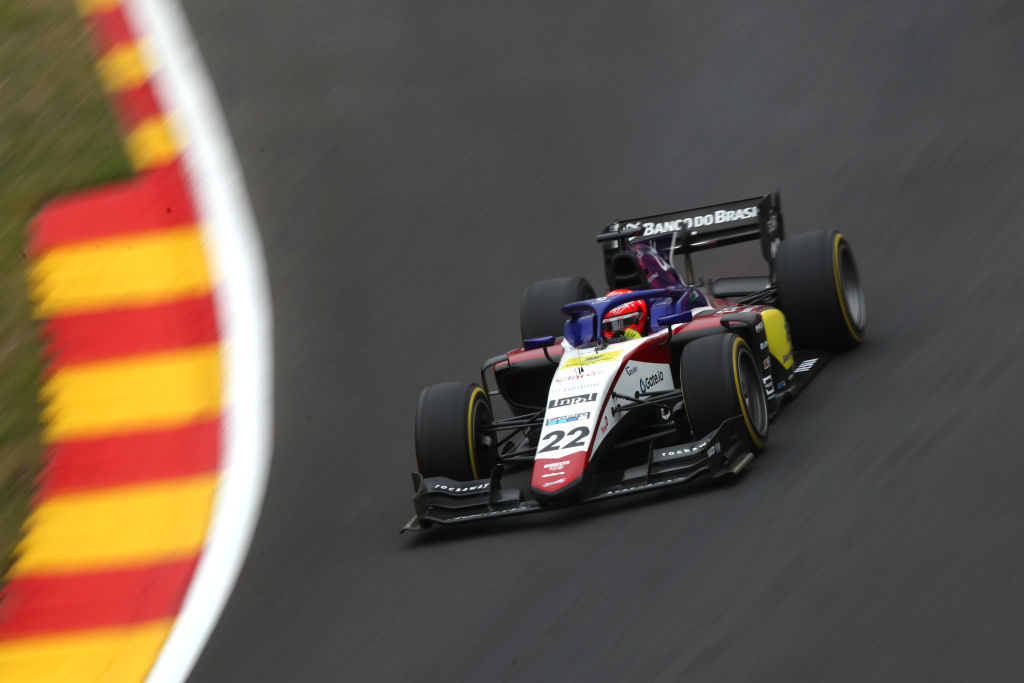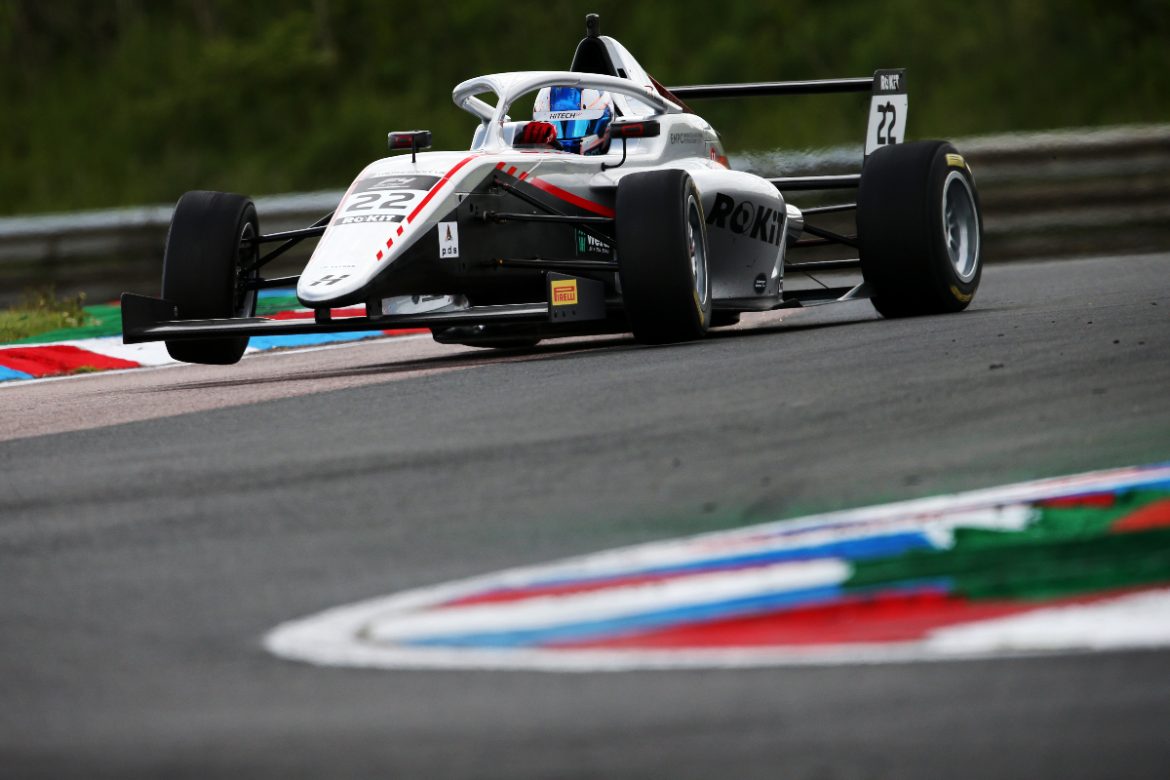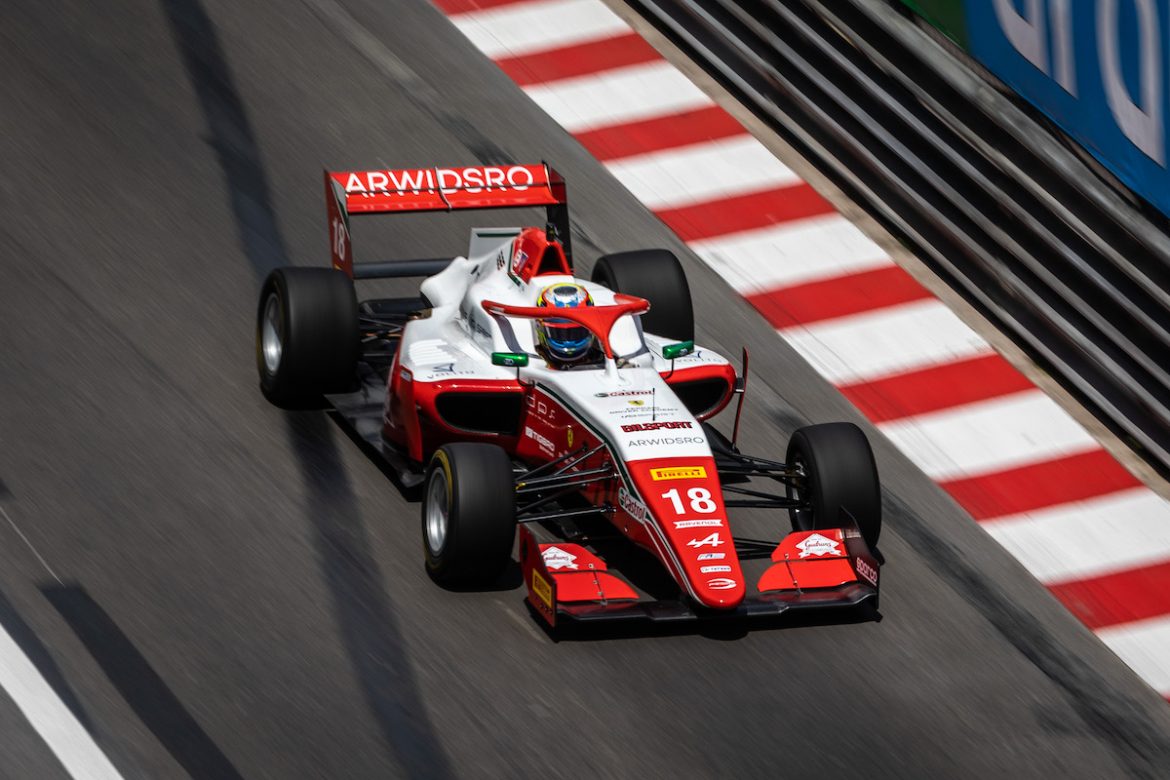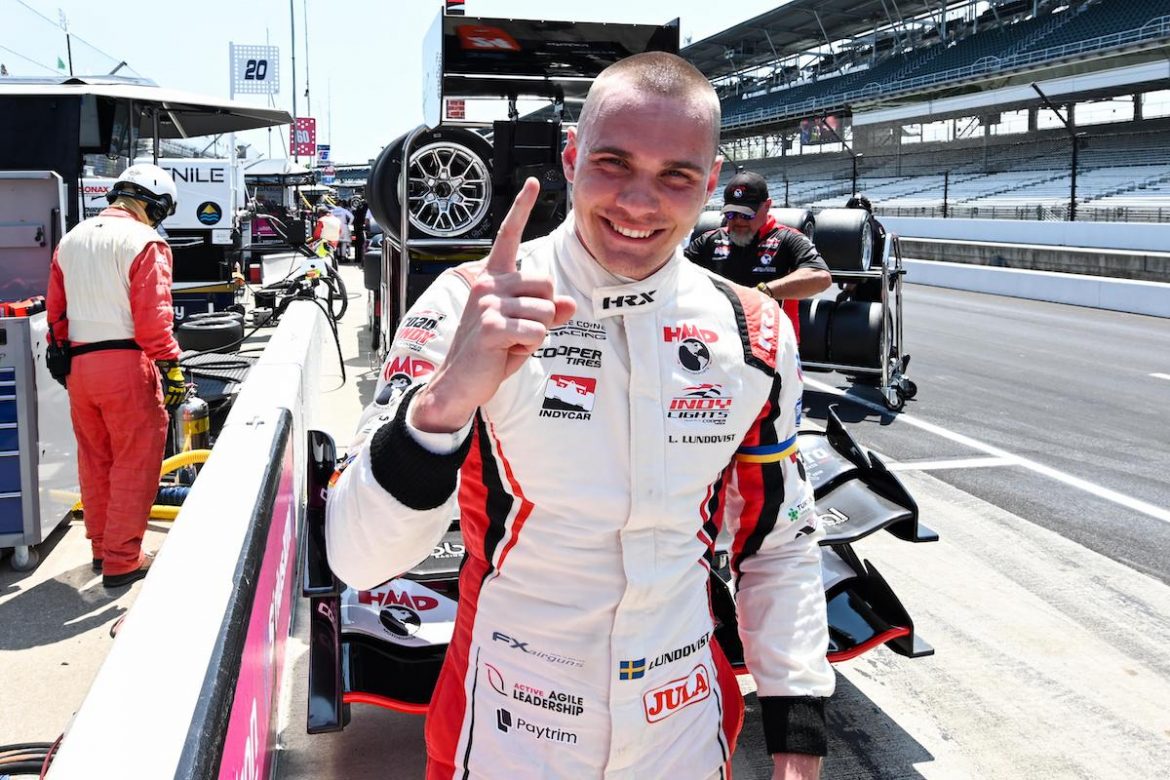See which drivers charted from 20th to 11th in the penultimate part of our ranking of the most impressive performers in junior single-seater racing in 2022
20. Franco Colapinto
Up 13 • Scored pole on his and VAR’s FIA F3 debut, and won twice
Colapinto arrived in FIA Formula 3 with championship newcomer Van Amersfoort Racing as a driver with the ability to cause an upset, but few would have bet on the combination doing just that on the first day of the season when the Argentine scored a superb pole position in Bahrain.
Perhaps helped by pre-season testing taking place at the same track, it proved to be a bit of a false dawn for VAR’s performance level in its first season. Colapinto slipped back to third in that first feature race, which became fifth after a track limits penalty, and his next best qualifying result over the season would be fifth at Zandvoort – which he turned into third for his only feature race podium.
He still qualified consistently inside the top 12, and converted reversed-grid poles into wins at both Imola and Monza, as well as taking podiums in the corresponding races in Austria and Hungary. When not on the podium, he scored in just three other races, but was almost always leading the VAR charge – with the exception of Silverstone, a track that was new to him but that team-mate Reece Ushijima knew like no other.
Colapinto’s talent – which is well-known in sportscar circles too – would be deserving of a Formula 2 drive or a place in one of F3’s top teams at the very least for 2023. He looks set to be reunited with MP Motorsport, where he could cause a few more upsets.
19. Roman Stanek
Re-entry • Revitalised career with a strong third year in F3
Stanek came into this third FIA F3 season knowing that his whole career was on the line. No matter that he had been rushed into a move up from Formula 4 before he was ready or had struggled in less than competitive teams.
A self-confessed Italophile, he was immediately at home in the reigning champion team, Trident, setting the pace in pre-season testing. At Bahrain he was blisteringly fast but two separate punctures robbed him of a hefty points haul to get his season underway and to bolster his confidence.
He finally took a deserved but slightly fortunate first F3 win at Imola, a circuit he loves, and followed it up with second from pole in Barcelona as he gained the upper hand over team-mate Zane Maloney. On occasions, he got caught out by the timing of yellow and red flags in qualifying but then most of the field had the same claim.
He faded slightly after a poor run of results mid-season, just as Maloney hit a streak of form which almost carried him to the title. Two second places at Spa-Francorchamps kept him in contention coming to Monza, but his hopes vanished as he got involved in another driver’s mistake.
He was finally able to demonstrate that the potential he showed in F4 is still there and fully deserves to make the step to F2.
18. Louis Foster
Up 16 • Won Indy Pro 2000 title in maiden year of US racing
The 2021 Euroformula runner-up Foster took on a new challenge this year by moving his racing career to America, where he had been at university, to race in Indy Pro 2000.
Working alongside renowned engineer John Hayes, Foster quickly adapted to the unique features of racing Stateside, such as the ovals and street circuits, but initially did struggle with the hard tyre compound used in IP2000 after learning to manage tyres with very different characteristics in Europe.
The race pace was always there, so once he got on top of what the tyre needed in qualifying he was able to string together seven wins in 10 races. That run of success included an impressive victory on his oval racing debut and two wins on the bumpy Toronto street circuit. He could be a title threat in Indy Nxt when he steps up to the series next year with Andretti Autosport.
17. Nikola Tsolov
New entry • Karting graduate took Spanish F4 by storm
Tsolov was nothing short of a sensation in his first season of single-seater racing.
Like his mentor Fernando Alonso, the Bulgarian joined Campos Racing for his first step in cars, lining up in the Spanish F4 championship. The series is getting stronger by the season, but Tsolov was a clear step ahead of both his fellow rookies and more experienced challengers most of the time.
He won 13 of the 21 races, and claimed 15 pole positions. After the opening round at Algarve, he only finished off the podium once – and that was a fourth place.
Team-mate Hugh Barter ran him closest and made a valiant effort to delay the inevitable with five wins from six races in the autumn, but Tsolov’s consistency was such that there was only so much he could do. Title secured, Tsolov went on to win all three races at Barcelona – a feat he had already achieved in back-to-back rounds at Valencia and Spa in the summer.
Some of his early-season margins in qualifying, and the races at Jerez and Valencia, were crushing – akin to what Andrea Kimi Antonelli was doing in other parts of Europe – while the Spa slipstream ensured he had to use racecraft to turn his poles into wins.
FIA F3 with ART Grand Prix in 2023 will be a big jump, but while Tsolov’s Alpine affiliation seems unlikely to last after Alonso’s Aston Martin defection, there will be no shortage of eyes watching to see just how good he could be.
16. Liam Lawson
Down 7 • Third overall in F2, with four wins in sprint races
After joining forces with Carlin, Lawson’s red-hot pre-season testing form understandably made him a title favourite for many, but after a double podium from that first weekend a title bid never really materialised.
Lawson was unexpectedly overshadowed by rookie team-mate Logan Sargeant, and in the five feature races from Jeddah to Baku he scored just two points, falling as low as 10th in the standings. Even though he ranked fourth on qualifying ‘supertimes’ over the season, he only twice started a feature race in the first two rows of the grid.
He could at least shine more frequently in sprint races, winning four of them despite never starting one from pole, demonstrating a more refined if slightly less spectacular form of the racecraft that had stood out in 2021. At Spa he followed a sprint win with third place in the feature race and repeated those results to end the year strongly in Abu Dhabi – enough for him to beat Sargeant by a single point to third in the standings.
Incidentally, those two weekends were the ones where he also drove in Formula 1 free practice, and with his top-three position in the end, he can feel slightly hard done by that he wasn’t given more consideration for the vacant seat at AlphaTauri. But Red Bull evidently still believes in his potential – nobody should forget how good he was in the DTM against seasoned professionals – and has placed him in Super Formula for 2023, a series that could suit him better than F2 has.
15. Gabriele Mini
Up 31 • Fought spiritedly against Prema dominance to take P2 in FREC
His sophomore Formula Regional Europe season may have had more ups-and-downs than a fairground ride, but after snatching second in the points with a thrilling drive in the finale, Mini’s smile was perhaps the broadest in the paddock.
Some of his performances were simply mesmerising – a dominant weekend at Imola as well as his crushing superiority in that Mugello finale. His ART GP team, who had ran Gregoire Saucy to the 2021 title, was never able to match Prema, or by the end of the season a revitalised R-ace GP, and Mini was usually in a different race to his team-mates, including a highly-rated Mari Boya.
He suffered more than his fair share of misfortune – a clutch problem cost him a win at Imola, a disqualification for a technical infringement a podium at Spa – which seemed to weigh heavily on him at times.
Some of his overtaking moves were inspired, either with perfect judgement of the right time to use the newly-introduced push-to-pass system or just old-fashioned racecraft.
Two years at ART GP did not quite deliver the expected results and Mini heads to Hitech for the step up to FIA F3. But this year he could show that the talent evident in his title-winning F4 year is very much still there.
14. Enzo Fittipaldi
Re-entry • Emerged as surprise F2 star in breakthrough season
Fittipaldi was undoubtedly the surprise package in F2 this year. After a late-season move up to the series in 2021 with Charouz Racing System had been brought to a premature close with his terrifying crash in Jeddah, he stayed with the Czech team, with its longstanding links to the Fittipaldi family, for a full season.
Nothing in the early races suggested that either team or driver was on the verge of a breakthrough as he failed to score in the first five races, although admittedly still suffering from the effects of his broken heel. But once back to full fitness, he suddenly couldn’t stop scoring. Though he took no victories, he did take three feature race second-place finishes, each from lowly grid slots, as well as one third.
Indeed, on feature race points alone, he would have finished fifth in the standings, just one adrift of Ayumu Iwasa. His results owed much to his innate racing ability, a knack for staying out of trouble and quiet tactical masterstrokes from the team.
His average qualifying position was just 13th, so low that he even missed out on picking up consolation points in sprint races. An inspired qualifying at Spa netted a front row start but he was outgunned on top speed, dropping back before losing fifth to a harsh post-race penalty. With Red Bull support and an expected move to Carlin, 2023 will be a true test of his ability.
13. Alex Dunne
New entry • Won British F4 at a canter while being best of the rest in Italy
Dunne’s place on the British F4 grid with Hitech was only confirmed a few days before the opening round, having already agreed to continue his continental relationship with US Racing that began during a fractured first year in cars in 2021. But he had already won twice for Hitech in the United Arab Emirates at the start of the year, and with the same second-generation car being introduced to Britain, the combination proved to be the one to beat from the start.
After winning the first race from second on the grid he then started from pole from the next seven opportunities in non-reversed-grid races. Another five wins from those poles were enough to build a healthy advantage in the championship.
Following the slightest of wobbles in the two rounds either side of the summer break, normal service resumed with another pair of double wins at Snetterton and Thruxton. Winning all four ‘main’ races from pole across the two visits to the latter’s high-speed layout stands out as particularly notable given how close races there normally are.
Conceding a win to rival Ollie Gray at Silverstone meant the title was confirmed in strange circumstances in qualifying for the Brands Hatch finale – with Dunne not even in the country. He was instead racing in Italian F4, where his feat of making Antonelli wait until the final round to be crowned champion was arguably just as impressive as his own British title.
Dunne got a 57-point head-start from Antonelli’s opening-round shocker, but went on to beat his rival fair-and-square for victory at the Red Bull Ring and deserves credit for heading the other Prema drivers in the championship. He deserves more than to race mainly British circuits again in GB3 next year, but another title would do his future no harm.
12. Dino Beganovic
New entry • Became FREC champion after impressive step forward
With victories at four of the most iconic tracks on the planet – Monza, Monaco, Spa and Imola – Dino Beganovic matched consistent speed with an almost total absence of errors to rebound from a difficult 2021 to take the FREC title in style.
Few had tipped him for the title against the likes of Paul Aron, Mini and Hadrien David, but having taken an immediate championship lead he withheld the pressure convincingly. His performance at Monaco stood out as a highlight, nailing the critical pole lap in the dying seconds and managing the race from the front.
Barring a complete reversal of fortunes, the championship was already his by the summer break – it was not until round five at Zandvoort that he finished outside the top two. He only qualified on pole four times, but more importantly, unlike his main rivals, he was seldom left mired in the midfield. He did have a couple of off-weekends, in Hungary and Barcelona, but could still score strongly even when he was not the out-and-out fastest as at the Red Bull Ring.
A critical observer might highlight the lack of any memorable overtakes or charges through the field. But to be fair, he had no need of such heroics. Yes, Prema had emerged from its mid-2021 doldrums to produce the fastest car but the hard work over the winter from driver, team and Ferrari finessed a faster, mentally stronger and more complete racer and deserving champion.
11. Linus Lundqvist
Up 21 • Delivered on expectation with Indy Lights title triumph
Having started 2021 as the strongest driver, but eventually finishing third in his rookie season, Lundqvist knew only the title would suffice in 2022 if he were to then graduate to top-level single-seater racing. Unfortunately, it looks like becoming champion has not been enough.
Although the grid had slightly grown on last year, there was arguably a less inspiring opposition for Lundqvist to pit himself against and so it was no surprise that he won four of the first six races. While his eventual title-winning margin was a comfy 92 points, he only won once in the season’s second half and there were no dominant displays to show the IndyCar paddock when he was doing the rounds with the teams.
He led twice as many laps as anyone else and was the benchmark for one-lap pace, but the real reason Lundqvist’s title is being undervalued is because of the changes IndyCar made as the series’ new promoter.
It provided Lundqvist with a $500,000 scholarship to spend on getting into IndyCar, compared to his immediate predecessor’s $1.3 million, and the season was cut from 20 to 14 races. There was going to be no eye-catching record-breaking for Lundqvist even with a super dominant campaign.



